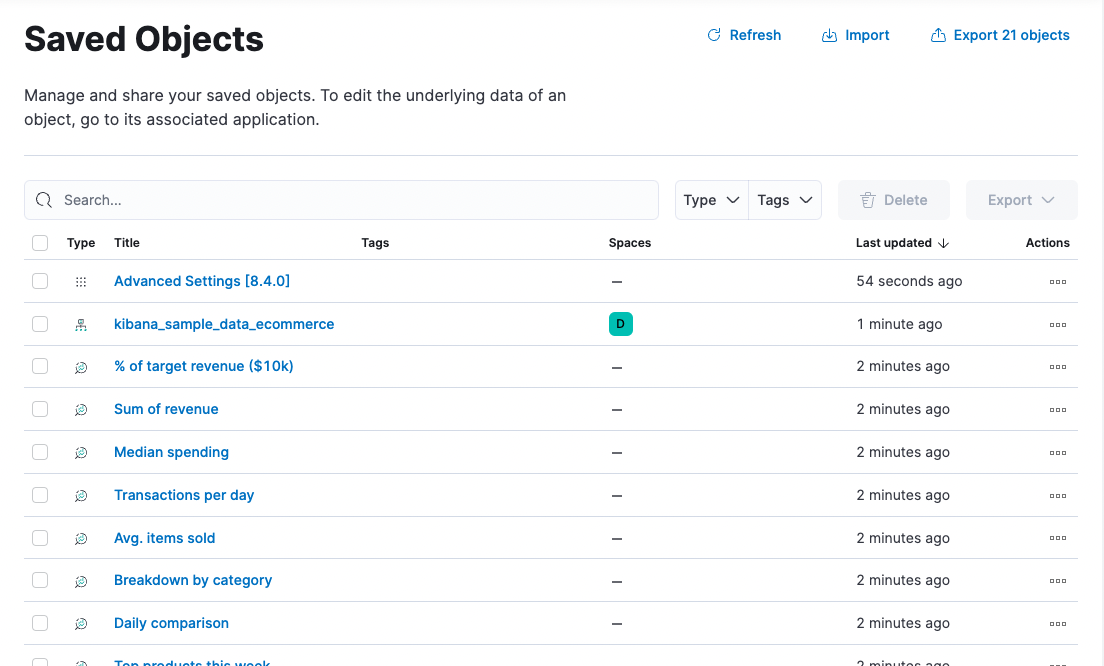Saved objects
editSaved objects
editTo get started, go to Project settings → Management → Saved Objects:

View and delete
edit- To view and edit a saved object in its associated application, click the object title.
-
To show objects that use this object, so you know the impact of deleting it, click the actions icon
and then select Relationships.
- To delete one or more objects, select their checkboxes, and then click Delete.
Import and export
editUse import and export to move objects between different Kibana instances. These actions are useful when you have multiple environments for development and production. Import and export also work well when you have a large number of objects to update and want to batch the process.
Import
editImport multiple objects in a single operation.
- In the toolbar, click Import.
- Select the NDJSON file that includes the objects you want to import.
- Select the import options. By default, saved objects already in Kibana are overwritten.
- Click Import.
Export
editExport objects by selection or type.
- To export specific objects, select them in the table, and then click Export.
- To export objects by type, click Export objects in the toolbar.
Kibana creates an NDJSON with all your saved objects. By default, the NDJSON includes child objects related to the saved objects. Exported dashboards include their associated data views.
Copy to other spaces
editCopy saved objects and their related objects between spaces.
-
Click the actions icon
.
- Click Copy to spaces.
- Specify whether to automatically overwrite any objects that already exist in the target spaces, or resolve them on a per-object basis.
- Select the spaces in which to copy the object.
The copy operation automatically includes child objects that are related to the saved object.